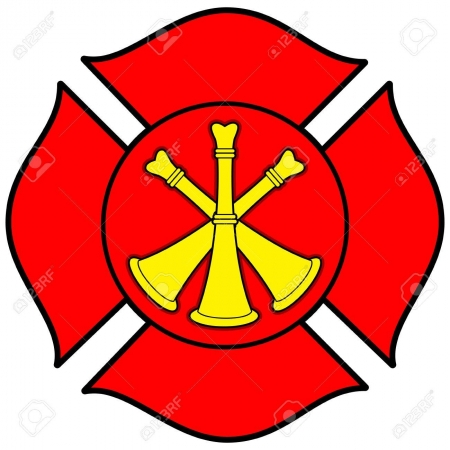
A City Full of Heroes
Although my title at RF Solutions is Director of Communications, I would prefer it was Chief Story Teller. I love a good story; I think most people do. Before this job, my writing experience focused on travel, culture, and global adventures. So, when an opportunity to work for a firm that installed in-building wireless solutions came about, I made sure there was a story to tell. And, after digging a little deeper, I found there were many.
In Search of the Missing Link: an FDNY Firefighter
For the past few months at RFS, I've spent a great deal of time reading documentation, attending webinars, and asking a ton of questions. I wanted to ingest the world of in-building life safety systems; specifically, FDNY mandated ARCS (Auxiliary Radio Communication Systems) post 9/11. These are complex networks that require engineers with years of experience to undertake and design. As my knowledge increased, and I reached a point where I thought I was ready to write about the company's accomplishments, it hit me. Some pretty essential people were missing from my stories: the firefighters themselves. That's when I made it my mission to meet a few of the brave members of the FDNY.
The Source: Facebook
I didn't know any firefighters personally, so I went to my most trusted source: Facebook. My network hasn't failed me yet, and I was excited to find many of my friends had connections to an FDNY firefighter. I was honored to sit and talk with two exceptional members of the force, to hear their stories, and share their wisdom. They have both been an FDNY firefighter for many years, and have seen the evolution of fireground communications. Bureau of Operations Deputy Assistant Chief Rich Blatus spoke to me about the changes he's witnessed over the past four decades. He believes recent advancements in technology have led to safer environments for firefighters.
We've Come a Long Way, Baby
"I started my career in 1980 as a firefighter in the Bronx. Back then, if you had a fire on the 32nd floor, they'd find a telephone number of a company located on that floor, and once upstairs, you'd use that phone to call down to the Chief Officer command in the lobby. That was the only method of solid communications available. From there we moved on to using a cross band repeater where we'd extend the range of our handheld radios by using a dual-band mobile or base radio located in the truck outside the building."
The Days of Walkie-Talkie Relays are Coming to an End
After 9/11, there were changes made to the FDNY fire code regarding new high-rise construction 75 feet or higher, and existing buildings with fire alarm panel upgrades. A fire department fixed auxiliary radio communication system (ARCS) with multiple channel capability is now required. The days of relying on walkie-talkie relays are soon coming to an end. "I've been in fires in buildings with ARC systems. They are a more reliable way for firefighters to communicate in a building. I can get the information that I need to know. The code changes regarding communications are a tremendous step in the right direction. Anything that improves communications on the fireground and can help us effectively communicate our tactics, can help save lives," said Deputy Assistant Chief Blatus.
You Might as Well be on the Surface of the Moon
Deputy Assistant Chief Bronx Borough Commander Christopher Boyle, currently serving as Chief of Tactical Communication for FDNY, charged with coordinating and developing all tactical communication projects, and one of the writers of the ARC system fire code spoke with me about life before and after ARCS. "When fighting a fire in a building without an ARC system, as soon as you went above the 15th floor, depending on the size of the building it could happen sooner, the firefighters you are trying to communicate with might as well be on the surface of the moon. You can't talk to them. Communication in a fire is critical, and if I can't find out what they have or what they're seeing – it's very frustrating. Having an ARC system is phenomenal. It took us from having no communication to being able to talk to whoever I need to speak with." It was an incredible opportunity to speak with one of the writers of the fire code. I had so many questions, and Chief Boyle patiently answered every one of them. Chief Boyle sits on an ARC system task force that works on continually improving the code specifications for the radio communication in-building systems. New changes to the code are expected first quarter 2020.
Can You Hear Me Now?
It was a gift to be able to speak directly with the men who use ARC systems in their daily lives. My knowledge base expanded to include the perspective of the 32nd floor. I can see Chief Boyle and Chief Blatus picking up a 2-way radio handset and getting the information they need to make the most educated decisions. And I'm even prouder of the work we do at RF Solutions. And firefighters are modern-day warriors with the most incredible stories, and I feel privileged to have the opportunity to tell them.
About Us
RF Solutions LLC (RFS) is a wireless consulting and solutions firm that creates safer, more connected communities with in-building communications systems. The RFS portfolio includes Public Safety/Emergency Responder Radio systems and in-building cellular reinforcement. RFS also addresses the full scope of the mobile IT environment, including wireless networking and infrastructure. RFS partners with leading technology providers to deliver exceptional value and successful results for our clients. The team consists of engineers and experts committed to providing secure, scalable and reliable solutions in a professional and cost effective manner. RFS has iBwave-certified engineering staff. iBwave Solutions' design software is the industry standard for radio frequency modeling and predictive design. RF Solutions has met FDNY’s stringent standards for certification and is approved to operate, test and maintain ARC Systems in New York City.
